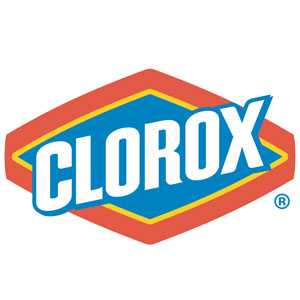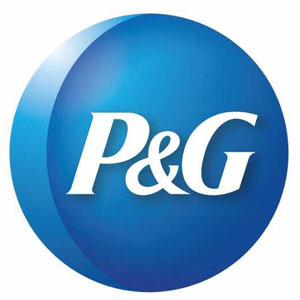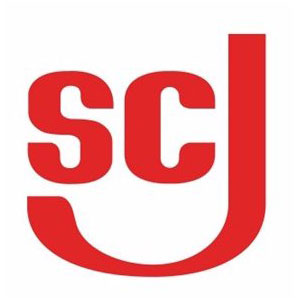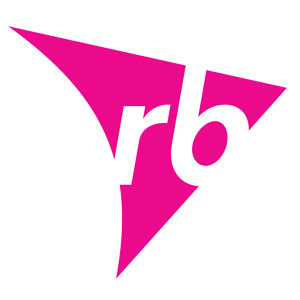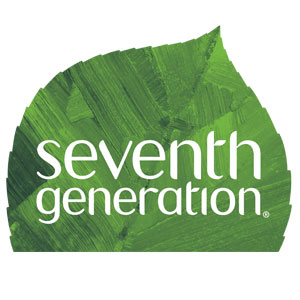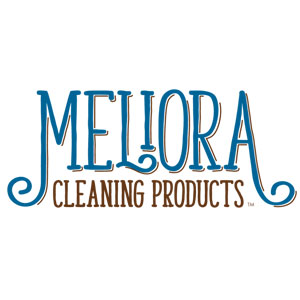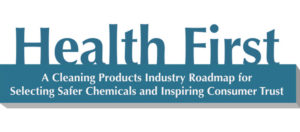Health First: Where Companies Rank on the Road to Safer Chemicals
DOWNLOAD a PDF of this assessment. Click here.
Health First Roadmap
2019 Cleaning Products Manufacturers Assessments
In 2017, WVE released our Health First Roadmap. The following is our first assessment of how various cleaning products manufacturers rank on the criteria outlined in The Roadmap. The companies included in this initial assessment include:
What is the Health First Roadmap?
The Health First Roadmap is a dynamic tool which provides specific guidance to cleaning products manufacturers on how to choose safer ingredients and ensure the chemical safety of their products. The Roadmap outlines key benchmarks and strategies from the “square one” of simple compliance, to the aspirational high road of a “Health First” chemical safety program.
The Health First roadmap is designed as a guide for cleaning products companies to think more holistically about their chemicals management programs and their commitment to chemical safety. While critically important to public health, chemicals management has not yet reached the same level of corporate awareness as other critical issues such as carbon emissions, water usage, or energy conservation. The Roadmap is designed to help change that, by providing metrics, policy recommendations and other tools, to bring concerns of chemical ingredients – which are already on the minds of the public – more formally to the corporate arena.
Why is the Roadmap needed?
Every company claims that their products are safe and that they have policies and processes to assure that safety. But almost none are transparent about the specifics of those policies and processes. This makes it hard for consumers and advocates to distinguish between those taking it easy, and those truly taking the harder road by putting health first. The emphasis on public transparency of chemical screening methods cannot be overstated. The Roadmap identifies where and how companies can communicate information about their screening processes and report on their progress towards chemical safety goals.
Descriptions of Key Elements of the Roadmap
The roadmap outlines the key categories included in company chemical screening, and benchmarks –from “compliance” to the “high road” — the ways companies can make progress towards an approach that puts health first.
COMPLIANCE
COMPLIANCE
Companies take no additional action to restrict or prohibit chemicals of concern than is currently required by law. They continue to use chemicals deemed hazardous in other jurisdictions.
DO LESS HARM
DO LESS HARM
Companies take action by prohibiting or restricting chemicals deemed hazardous by any jurisdiction in the world, including any chemical for which new regulations emerge. They seek to make these changes across all cleaning products, regardless of levels or exposure pathways.
DO NO HARM
DO NO HARM
Companies ensure that their products do not contain chemicals of concern to human health or the environment. They stay ahead of regulatory changes by prohibiting chemicals deemed hazardous by any jurisdiction in the world and those that consumers and NGOs are concerned about, regardless of levels or exposure pathways.
HEALTH FIRST
HEALTH FIRST
Companies put human health and the environment first. The set of chemicals they allow in their products is very limited to only those that pose no potential health risks to consumers at any level, regardless of exposure pathways. They are transparent about their chemical screening efforts and criteria, and they lead collaborative efforts to move the cleaning products industry towards safer production.
The graphics below illustrate the current progress companies are making in each category on their journey to health first.
———————————————————–
Case Study: Commitment to Chemical Safety
In several companies, in lieu of a corporate chemical safety policy, we identified strong statements of a company’s commitment to chemical safety. For example, on their website, Seventh Generation clearly states that they won’t use ingredients that are carcinogens, mutagens, neurotoxins, developmental toxins, endocrine disrupters or strong sensitizers. They also established and disclosed their goal of eliminating all chronic toxicants from their products by 2020. RB publicly committed to prioritize the use of non-toxic or least toxic raw materials in their products. They also committed to continuous review of their restricted substance list (RSL) with a goal of actively removing substances of concern overtime. Both companies have reported on specific examples of ingredients of concern they have removed from their products in recent years. Procter & Gamble developed a 2030 goal to significantly improve communication of their safety science for all of their brands.
Identifying Chemicals of High Concern
This section encompasses specific approaches, methods and criteria for evaluating chemicals and prioritizing chemicals of high concern to reduce or eliminate. This includes specific health and environmental endpoints considered, and how the company uses authoritative lists of chemicals of concern established by scientific and governmental organizations.
Taking Action on Chemicals of High Concern
This section addresses how companies take action on the chemicals they have identified as chemicals of high concern. This includes establishment of a Restricted Substances List (RSL), establishing thresholds for chemicals to be restricted and consistent criteria for eliminating chemicals.
Case Study: Identifying and Taking Action on Chemicals of High Concern
These two sections of the Roadmap are at the heart of a good chemical safety program. Having strong and consistent standards for what types of chemicals will or won’t be used in products is key to establishing chemical safety. While all the companies we surveyed communicated that consumer safety is a top priority, there were fewer companies willing to prove it by providing specifics on how they determine their ingredients to be safe. One popular method for communicating chemical safety standards is to use third-party product certifications such as MadeSafe, EWG Verified, Safer Choice and GreenSeal. The advantage to having products certified is that the criteria and standards for these certifications are publicly available and transparent. So when you see one of these seals, you know the standards to which the product was held. Meliora Cleaning Products led the pack by ensuring that all of their products are MadeSafe Certified. Seventh Generation and RB scored points for using the EPA’s Safer Choice label for a large number of products. SC Johnson runs their own internal program called Greenlist, and did a laudable job disclosing much of the criteria for that program in their 2017 Sustainability Report.
Chemicals Policy Transparency
This section looks at whether companies publicly share information about their safer chemicals policies, practices, and criteria. This includes public disclosure of information about a company’s chemical screening process and criteria, and public reporting on measurable progress through annual sustainability reports (or other print or online communications).
Case Study: Corporate Chemical Safety Policy and Policy Transparency
Corporate policies are one way of demonstrating that a particular issue is taken seriously as a priority for a company. Having a chemical safety policy means the company has engaged in internal conversation about their commitment to ensuring the chemical safety of their products and has decided what their standards are for safe products. In many cases, establishment of a chemical policy leads to company-wide chemical safety goals to improve over time. We found that publicly available chemical safety policies were rare among the companies we surveyed. In fact, only one company we surveyed, Meliora Cleaning Products, had published their chemical safety policy. You can view it on their website here. Disclosing a chemical safety policy publicly lets your customers know where you stand, and can move the whole industry forward, as other companies can be inspired by leading examples.
Helpful guidance on developing a chemical safety policy is available from BizNGO.
Case Study: Chemical Footprinting
The Chemical Footprint Project (CFP) is a first-of-its-kind program that helps companies both measure and benchmark their progress as they reduce their use of chemicals of concern and use safer alternatives. Kudos to Seventh Generation for both being an early adopter of the CFP and for leading the industry both in getting a great score and for publicly disclosing their results! (Public disclosure of results is optional in the CFP program.) We are encouraged that several other cleaning product companies are also now participating – and look forward to one day being able to review and compare them all on their progress.
Industry Collaboration
This section highlights the importance of collaboration among companies that manufacture cleaning products. It measures efforts to work collaboratively, share information relevant to chemical screening and safer chemicals, and develop shared tools and practices that raise the standards across the industry.
Conclusions
The Health First roadmap is designed as a guide for cleaning product companies to think more holistically about their chemicals management programs and their commitment to chemical safety. While critically important to public health, chemicals management has not yet reached the same level of corporate awareness as other critical issues such as carbon emissions, water usage or energy conservation. The Roadmap is designed to help change that, by providing metrics, policy recommendations and other tools, to bring concerns of chemical ingredients – which are already on the minds of consumers – more formally to the corporate arena.
The good news is there are companies responding to ingredient safety concerns and recognizing that being in compliance with current laws and regulations is just not enough to ensure product safety. Companies are taking steps towards improving the transparency of their screening processes and beginning to report on their goals and progress. But there is more work to do to move towards our Health First vision. Assuring the public that products are ‘safe to use’ rings hollow if companies don’t also clearly disclose the processes they use to determine the safety of their ingredients. How successful they are in following this Health First framework is crucial to sustaining the trust and loyalty of their customers. We look forward to continuing to document the progress of these and other companies in the cleaning products industry in coming years.
Organizational Support
Alaska Community Action on Toxics
American Sustainable Business Council
Breast Cancer Prevention Partners
Center for Progressive Reform
Clean Production Action
Dr. Yolanda Whyte Pediatrics
Ecology Center
Environmental & Public Health Consulting
Environmental Working Group (EWG)
Epidemic Answers
Fe y Justicia Workers Center
Great Neck Breast Cancer Coalition
Green America
Huntington Breast Cancer Action Coalition
Informed Green Solutions
Material Research L3C
Mind the Store Campaign
Moms for a Non-Toxic New York
NDLON
Nontoxic Certified
Oregon Environmental Council
Safer Chemicals, Healthy Families
Shaw Institute
Sierra Club
WE ACT for Environmental Justice
Wisconsin Alliance for Women’s Health
WVE (Women’s Voices for the Earth)
UIC School of Public Health, Division of Environmental & Occupational Health Sciences

